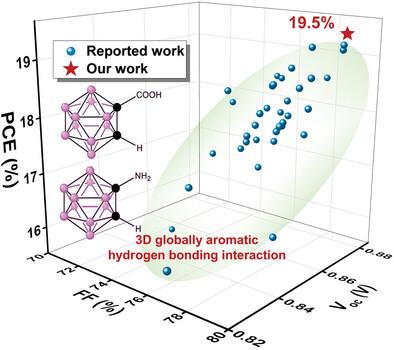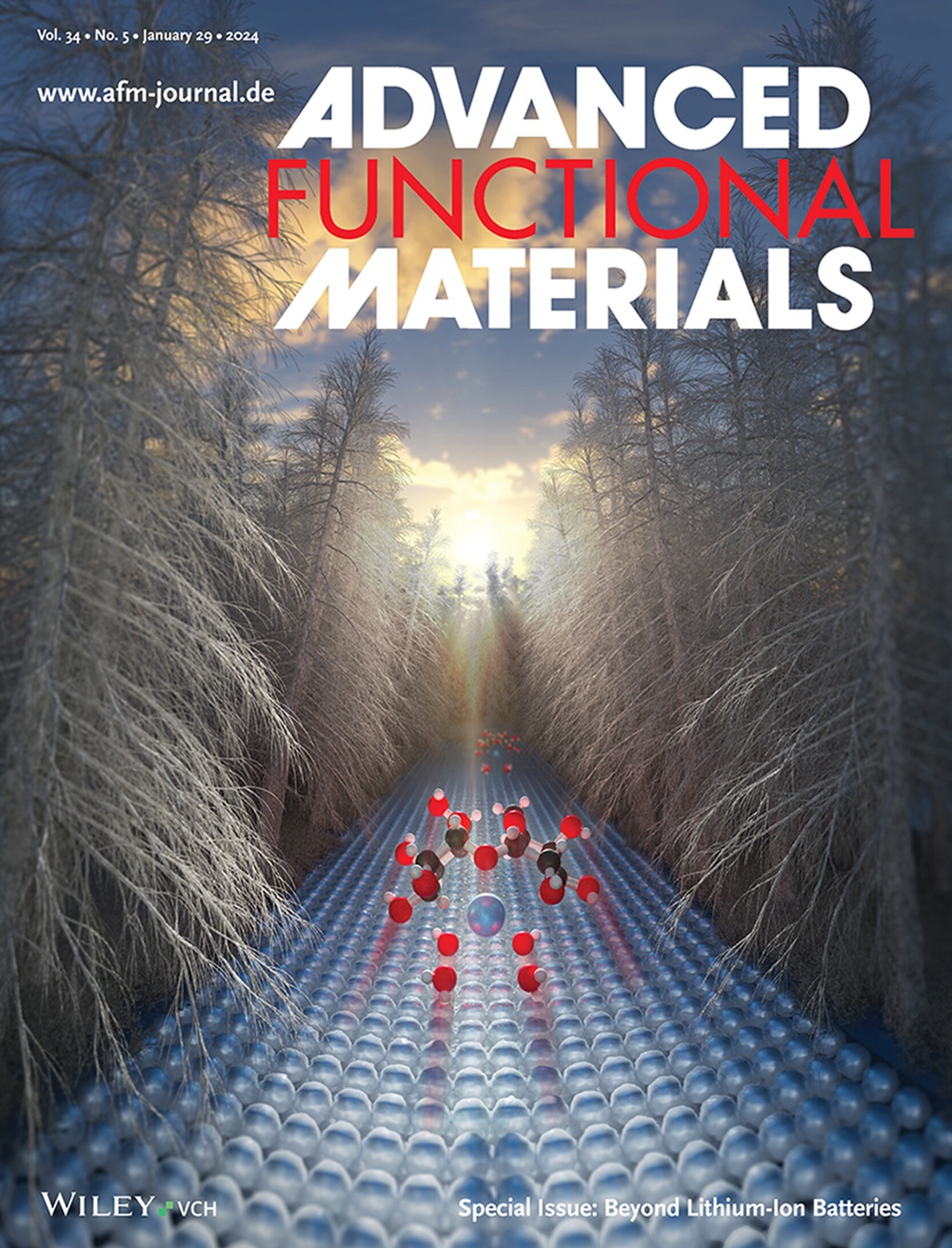High-Performance Organic Solar Cells Enabled by 3D Globally Aromatic Carboranyl Solid Additive
IF 18.5
1区 材料科学
Q1 CHEMISTRY, MULTIDISCIPLINARY
引用次数: 0
Abstract
A key factor in optimizing organic solar cells (OSCs) is the precise control of blend film morphology to enhance exciton dissociation and charge transport. Solid additives play a vital role in this process, with 3D polyhedral or spherical molecules being ideal candidates due to their delocalized π-orbitals and omnidirectional charge transport. However, the application of classical fullerene derivatives as spherical additives is limited by their synthetic complicacy and poor solubility. Herein, the potential of 3D globally aromatic carboranyl cages as solid additives, specifically 1-amino-o-carborane (CB-NH2) and 1-carboxy-o-carborane (CB-COOH), is explored to fine-tune the film morphology and improve the performance of OSCs. These spherical molecules provide an extensive surface for hydrogen bonding interactions, which serve as the driving force for manipulating the vertical phase separation and active layer crystallinity. Remarkably, CB-NH2-processed devices with well-tuned morphology yield a remarkable power conversion efficiency of 19.48%, highlighting the effectiveness of 3D carboranyl additives on improving OSC performance. This work challenges the reliance on fullerene derivatives as spherical additives and offers new insights into the mechanisms by which 3D globally aromatic additives can achieve high performance in OSCs, emphasizing the significance of molecular engineering in the development of next-generation solar cell technology.

利用三维全球芳香族碳硼酰固体添加剂实现高性能有机太阳能电池
优化有机太阳能电池(OSC)的一个关键因素是精确控制混合薄膜的形态,以增强激子解离和电荷传输。固体添加剂在这一过程中起着至关重要的作用,三维多面体或球形分子因其分散的 π 轨道和全向电荷传输而成为理想的候选分子。然而,经典富勒烯衍生物作为球形添加剂的应用受到其合成复杂性和溶解性差的限制。本文探讨了三维全局芳香族硼烷笼作为固体添加剂的潜力,特别是 1-氨基-邻硼烷(CB-NH2)和 1-羧基-邻硼烷(CB-COOH),以微调薄膜形态并提高 OSC 的性能。这些球形分子为氢键相互作用提供了广阔的表面,成为操纵垂直相分离和活性层结晶度的驱动力。值得注意的是,CB-NH2 加工的器件具有良好的形貌调节能力,能产生 19.48% 的显著功率转换效率,突出表明了三维碳酰添加剂在提高 OSC 性能方面的有效性。这项研究挑战了人们对富勒烯衍生物作为球形添加剂的依赖,并对三维全球芳香族添加剂在 OSC 中实现高性能的机理提出了新的见解,强调了分子工程在下一代太阳能电池技术发展中的重要意义。
本文章由计算机程序翻译,如有差异,请以英文原文为准。
求助全文
约1分钟内获得全文
求助全文
来源期刊

Advanced Functional Materials
工程技术-材料科学:综合
CiteScore
29.50
自引率
4.20%
发文量
2086
审稿时长
2.1 months
期刊介绍:
Firmly established as a top-tier materials science journal, Advanced Functional Materials reports breakthrough research in all aspects of materials science, including nanotechnology, chemistry, physics, and biology every week.
Advanced Functional Materials is known for its rapid and fair peer review, quality content, and high impact, making it the first choice of the international materials science community.
 求助内容:
求助内容: 应助结果提醒方式:
应助结果提醒方式:


